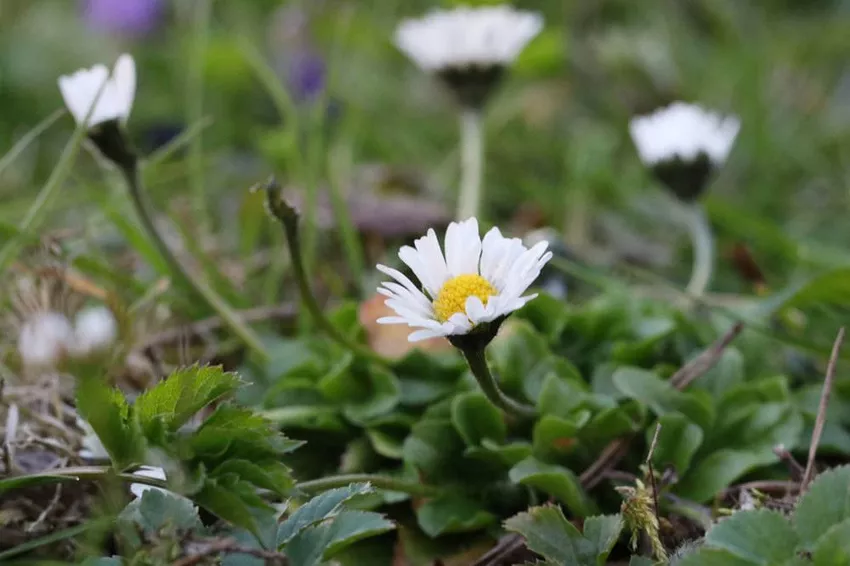
Who does not know her? Daisies (Bellis perennis), also known as daisies, daisies or daisies, the small, perennial and undemanding perennials. You can find them everywhere, even in sparse places they enchant with their lovely flowers. In addition to the wild form, there are also numerous cultivated forms. The small white-yellow ray flowers or the red, white or pink flower balls of the cultivated forms accompany us almost all year round. Of course, a lot can be done to ensure long-lasting blooms. Here are some tips.
Flowering time of daisies
The daisy is, in the truest sense of the word, a real little "busy Lizzie". The small basket-shaped inflorescences appear almost all year round. Of course, there are also differences between the common daisy (Bellis perennis) and the cultivated forms (Bellis perennis hybrids). The wild form is more robust in its constitution and therefore also has a longer flowering period. They withstand temperatures down to -15 °C.
- Wild form: March to October / November
- Breeding form: March to August
Sometimes in mild winters, when other plants are still dormant, the small flowers appear as early as January or February. The common daisy is already slowly showing the end of winter. In mild regions, such as wine-growing areas on the Lower Rhine or in gardens with a protected microclimate, flowering can occur all year round.

tip: After flowering, propagate by self-seeding. If not desired, the faded flowers must be removed regularly. This requires a daily check.
Daisy as a weather prophet
The rather modest daisy can give hints about the coming weather. It always faces the sun, east in the morning and west in the evening. The small flowers only open when the weather is nice and stable. If the humidity and the risk of rain increase in the next few hours, the flower heads close or stay closed. They also close in the evening after sunset.
influencing factors
Location affects flowering time
Daisies are real sun worshippers. The right location and the soil conditions ensure a long and uninterrupted bloom. Love the little perennials
- a sunny to partially shaded location
- a loose, humus- and nutrient-rich, permeable soil
- Clay content in the soil is tolerated
- normal potting soil is sufficient in the bucket
- a drainage layer when kept in buckets
In shady places and also in heavy, wet loamy soil there is also flowering, but this is usually quite sparse and the flowering period is also very short.
Water during flowering
As a rule, daisies are very modest and unpretentious. Care is hardly necessary. However, a lot can be done for a lush and long-lasting bloom, such as
- from March to September a 14-day dose of liquid fertilizer
- water regularly, especially when cultivated in pots
- Avoid waterlogging
- hard water is tolerated
- a radical pruning in spring and autumn
- Winter protection for cultivated forms in beds (fir branches) and tubs (jute bags, bubble wrap)
Normally, the common daisy in the bed hardly needs watering, only on hot days and during long periods of heat.

tip: Even in winter, daisies in tubs need to be watered occasionally on frost-free days so that they don't dry out.
prolongation of the flowering period
Not much is needed to extend the flowering period. You just have to keep a few things in mind:
- regular cleaning of faded flowers
- this stimulates the formation of new flowers
- easily possible when keeping buckets or other vessels
- quite difficult and very time-consuming in large clumps outdoors
- Cut back perennials by a hand's width after the main bloom, followed by a second bloom
If cleaning out is too time-consuming, different Bellis perennis varieties can also be planted. These often have different flowering times. In this case, abundant flowering occurs almost all year round.
tip: The wild and cultivated forms of the daisy are edible and a good source of vitamins. The slightly spicy aroma is suitable for many dishes. In addition, they also stimulate the metabolism and it is good for the skin and internal organs.